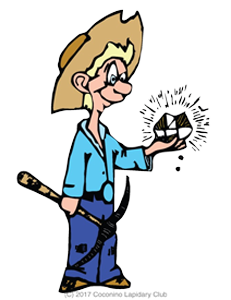This short tutorial on how to operate a slab saw is directed toward the new user and can be a refresher for the seasoned slab-miester.
Generally slab saws are heavy, so find a covered area indoors to place it, (or outside if you have to). You probably won’t be moving it unless yours has wheels. Because your saw uses oil as a coolant/lubricant take that into consideration when deciding where to place it. The area around the saw will be messy no matter what you do. A nearby source of electricity, good overhead lighting and a workbench next to the saw are essential for obtaining the best results.
Safety is number one when working with any type of saw. Your electric cord should be a grounded three prong plug, no bare wires showing. Depending on the size of the blade your saw uses, 12”, 14”, 16”, 18” on up to 36”, your motor size will vary accordingly. From a ½ hp to 1 ¾ hp electric motor, so if you need to use a drop cord, the bare minimum to use is a SJTW 16awg cord, the older saw motors, unless they were upgraded, will use a lot of amps just turning them on. Sometimes a saw-cut can take an hour or better to complete so using a cord that is too small for the amperage will overheat the motor and wear it out prematurely. Never leave a running saw unattended, even if it has an automatic shut-off, the moment you walk away bad things tend to happen, maybe you didn’t secure that large rock in the saw vice well enough and it moves, binding that $400.00 blade in a running motor, so it’s best to stay within 10 feet or so to prevent expensive mishaps.
So now you want to cut one of those prize rocks you found last weekend, gotta know what’s inside right ! Your saw uses oil as a lubricant or should, using water is insufficent to lubricate and keep the blade cool during cutting, I recommend NOT using water. What I do recommend is using an appropriate oil available through slab saw dealers, which will give you many options to choose from. I use a Shell Oil product, Amber Neutral Oil 100 – available in 5 gallon containers. So how much oil will I need? Just enough to cover the diamonds on the rim of the blade, on my 18” that’s 3/8 of an inch. Adding more than what covers the rim will cause unnecessary drag making the motor work harder.
My saw is a 1960’s Great Western 18” which uses about 4 gallons of oil to cover the diamonds on the rim 3/8” and a combination hydraulic feed and 15 lb weight, to pull the rock through the blade. The speed at which the rock moves through the blade is important, slow is your friend, giving a smooth cut, too fast a feed and you get hop marks making more work for your finished piece.
Depending on what type of material you are cutting, mud build-up in the pan will signal when it’s time to drain the oil. Your motor may run slower, overheat and shut off due to mud building up in the bottom of the pan. This can happen to such an extent that the saw blades’ diamond rim are in the mud. Soft materials like Onyx, Serpentine, and Howlite are ground away as the rock passes through the saw blade, creating a lot of mud.
When it’s time for an oil change, look forward to getting filthy. At this time the entire machine interior should be cleaned. My ritual is to let the machine sit idle for at least 3 days after my last cut to let the mud settle out. I next use a 5 gallon bucket, with a wire strainer I made to fit inside, and a paper grocery bag resting on that. I then drain the oil into the bag. So now there is a layer of mud at the bottom of the pan and oil above that. I pull the drain plug and let the oil drain out, the mud is heavy enough that the oil will drain right over it – now I have reclaimed 75% of the oil leaving the mud and some oil. The fun begins when it’s time to push the mud through that drain hole and do the same process with the 5 gallon bucket strainer and grocery bag. It takes 3 separate buckets and strainers on my machine, as the oil remaining suspended in the mud will gravitate out into the bucket over several weeks time, retrieving a little more oil.


